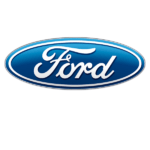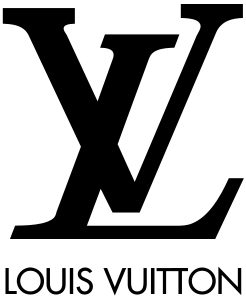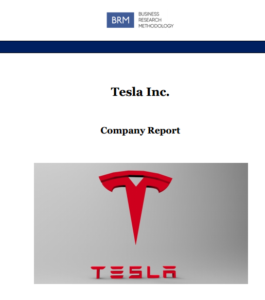
The table below illustrates Ford Motor Company SWOT analysis template Strengths 1. Brand value of almost USD 14 billion[1] 2. Effective R&D strategy with R&D investments of USD8 billion in 2017 alone[2] 3. Extensive range of patent ownership with more than 13500 patents[3] 4. Market share of 14,8% in the US[4] Weaknesses 1. Product recall frequency higher than industry average 2. Weaker position in developing markets 3. Weaker production capabilities compared to major competitors such as Toyota, Volkswagen, and General Motors 4. Lack of appeal among younger customers Opportunities 1. Increasing presence in developing markets 2. Greater focus on alternative fuel vehicles 3. Greater integration of artificial intelligence (AI) and autonomous driving 4. Benefiting from digital marketing to a greater extent Threats 1. Another global economic and/or financial crisis 2. Further intensification of competition 3. Oil prices fluctuations may have adverse impact on sales 4. Regulatory changes unfavourable to automobile industry How to use Ford Motor Company SWOT Analysis template above Expand each point above into one or more paragraphs with discussions and analysis. Additional points related to Ford Motor Company strengths, weaknesses, opportunities and threats not listed above can also be included if you think they are relevant points and add value to the work. You will need to support your arguments with references from reliable sources such as annual report of the company, industry journals and magazines and government publications. Your discussions will need to include statistical data and preferably charts and graphs with references to the sources. You can also find many examples for the application of SWOT analysis using the case studies of famous global brands here. [1] Interbrand (2018) Available at: https://www.interbrand.com/best-brands/best-global-brands/2018/ranking/ford/ [2] Ford’s research and development expenditures from FY 2013 to FY 2017 (2018) Statista, Available at: https://www.statista.com/statistics/260867/fords-research-development-expenditures/ [3] CBInsights (2018) Available at: https://www.cbinsights.com/investor/ford-motor-company-patents…
By John Dudovskiy
Category: Automobile

The table below illustrates Qatar Airways SWOT analysis template Strengths 1. Market leadership in luxury travel segment serving more than 150 destinations in all six continents[1] 2. High level of customer loyalty 3. Cross-cultural awareness in service provision 4. Strong backing from the government of Qatar Weaknesses 1. Massive operational expenses 2. Brand image has been damaged due to CEO’s sexist controversial remarks[2] 3. Lack of domestic flights in Qatar i.e. extensive reliance on external market 4. Low employee morale due to controversial HR practices Opportunities 1. Increase in demand of luxury travel from emerging economies such as China and India 2. Application of brand extension business strategy 3. Increase in demand thanks to 2022 FIFA World Cup in Qatar 4. Formation of strategic alliances with other companies in travel industry Threats 1. Political instability in Qatar due to its location in the middle of conflict zones 2. Intensification of competition 3. Further increase in fuel prices 4. New environmental regulations can have negative implications on airline industry How to use Qatar Airways SWOT Analysis template above Expand each point above into one or more paragraphs with discussions and analysis. Additional points related to Qatar Airways strengths, weaknesses, opportunities and threats not listed above can also be included if you think they are relevant points and add value to the work. You will need to support your arguments with references from reliable sources such as annual report of the company, industry journals and magazines and government publications. Your discussions will need to include statistical data and preferably charts and graphs with references to the sources. You can also find many examples for the application of SWOT analysis using the case studies of famous global brands here. [1] About Qatar Airways (2018) Available at: https://www.qatarairways.com/en/about-qatar-airways.html [2] Kollewe, J. (2018) “Qatar Airways…
By John Dudovskiy
Category: Airline

The table below illustrates Louis Vuitton SWOT analysis template Strengths 1. High level of brand recognition and brand value of USD 33,6 billion[1] 2. Effective implementation of celebrity endorsement strategy 3. Efficient collaboration with top designers worldwide 4. High level of customer loyalty Weaknesses 1. Overly expensive product prices 2. Lack of product innovation over the years 3. Weak online presence and online sales 4. Limited distribution channel – selling products through own stores only Opportunities 1. Potential in Asia in general and in China and India in particular 2. Formation of strategic collaboration with other companies in other industries targeting the same customer segment 3. Revamping the brand image to make it more attractive to Millenials and Generation Z 4. Development of new products and services applying Louis Vuitton competitive advantages Threats 1. Increase in the cases of counterfeit of Louis Vuitton products 2. Global economic and/or financial crisis similar to crisis of 2008 – 2010 3. Intensification of competition, specifically from emerging economies 4. Increase in the popularity of substitute fashion products and services How to use Louis Vuitton SWOT Analysis template above Expand each point above into one or more paragraphs with discussions and analysis. Additional points related to Louis Vuitton strengths, weaknesses, opportunities and threats not listed above can also be included if you think they are relevant points and add value to the work. You will need to support your arguments with references from reliable sources such as annual report of the company, industry journals and magazines and government publications. Your discussions will need to include statistical data and preferably charts and graphs with references to the sources. You can also find many examples for the application of SWOT analysis using the case studies of famous global brands here. [1] Most Valuable Brands (2018) Forbes,…
By John Dudovskiy
Category: Beauty & Fashion

The table below illustrates Costa Coffee SWOT analysis template Strengths 1. High level of international presence – the 2nd largest coffee chain globally with 3,401 stores across 31 countries 2. Largest coffee chain in the UK with 1,357 high street stores, 1,032 franchise stores and 7,100 Express machines[1] 3. Reputation for high quality coffee 4. Wider product range compared to its main competitor Starbucks Weaknesses 1. Inefficient marketing strategy 2. More expensive compared to Starbucks 3. Costa competitive advantage hard to sustain (can be imitated by new competitors) 4. Decline of sales by 1.5% in Q3, 2017 in UK[2] Opportunities 1. Pursuing more aggressive international market expansion strategy 2. Formation of strategic alliances with other business in catering industry 3. Development of new healthier caffeine products 4. Benefiting from the competitive advantages of its new parent company – Coca Cola Company Threats 1. Increasing prices of raw material i.e. coffee beans 2. Increasing indirect competition 3. Coffee being perceived as unhealthy beverage 4. Disruptions in supply chain How to use Costa Coffee SWOT Analysis template above Expand each point above into one or more paragraphs with discussions and analysis. Additional points related to Costa Coffee strengths, weaknesses, opportunities and threats not listed above can also be included if you think they are relevant points and add value to the work. You will need to support your arguments with references from reliable sources such as annual report of the company, industry journals and magazines and government publications. Your discussions will need to include statistical data and preferably charts and graphs with references to the sources. You can also find many examples for the application of SWOT analysis using the case studies of famous global brands here. [1] Kollewe, J. (2018) “Costa Coffee loses its froth as sales fall” The Guardian, Available…
By John Dudovskiy
Category: Catering

Tesla Inc. (formerly Tesla Motors Inc.) is an alternative fuel vehicles manufacturer founded in 2003 by Martin Eberhard and Marc Tarpenning in Palo Alto, California, USA. The company produces fully electric vehicles, energy generation and storage systems and also installs and maintains such systems and sells solar electricity. Tesla’s mission statement is ‘to accelerate the world’s transition to sustainable energy’. The electric automaker operates stores and galleries in the US and 35 other countries worldwide and employs more than 70,500 people globally. In 2020, Tesla achieved operating margin of 6,3% which is the highest in the industry. The electric automaker had an operating cash flow less capex (free cash flow) of USD 2.8 billion during the same period. In the last quarter of 2020 alone, Tesla had USD 4.9 billion increase in cash and cash equivalents. Free cash flow during the same period reached USD 1.9 billion. Tesla business strategy integrates focus on electric cars and ownership of distribution of products. Moreover, the company stresses the low cost of ownership of Tesla electric vehicles as one of the solid bases of its competitive advantage. The alternative fuel vehicles manufacturer has a divisional organizational structure and its divisions include energy, engineering and production, HR and communications, legal and finance, sales and software. Tesla organizational culture, on the other hand, is associated with ambitious innovation, adherence of First Principles method of decision making and lack of bureaucracy throughout the company. Tesla possesses a set of competitive strengths. These include the first mover advantage, increasing numbers of vehicles sales, expertise in innovation and a high level of brand recognition at an international level. At the same time, there are certain issues that cast a doubt over long-term growth prospects of the electric automaker. These points of concern for Tesla include overly expensive price…
Research-Methodology (“us”, “we”, or “our”) operates the https://research-methodology.net/ website (the “Service”). This page informs you of our policies regarding the collection, use, and disclosure of personal data when you use our Service and the choices you have associated with that data. This Privacy Policy for Research-Methodology is powered by FreePrivacyPolicy.com. We use your data to provide and improve the Service. By using the Service, you agree to the collection and use of information in accordance with this policy. Unless otherwise defined in this Privacy Policy, terms used in this Privacy Policy have the same meanings as in our Terms and Conditions, accessible from https://research-methodology.net/ Information Collection And Use We collect several different types of information for various purposes to provide and improve our Service to you. Types of Data Collected Personal Data While using our Service, we may ask you to provide us with certain personally identifiable information that can be used to contact or identify you (“Personal Data”). Personally identifiable information may include, but is not limited to: Email address First name and last name Phone number Cookies and Usage Data Usage Data We may also collect information how the Service is accessed and used (“Usage Data”). This Usage Data may include information such as your computer’s Internet Protocol address (e.g. IP address), browser type, browser version, the pages of our Service that you visit, the time and date of your visit, the time spent on those pages, unique device identifiers and other diagnostic data. Tracking & Cookies Data We use cookies and similar tracking technologies to track the activity on our Service and hold certain information. Cookies are files with small amount of data which may include an anonymous unique identifier. Cookies are sent to your browser from a website and stored on your device. Tracking technologies also…
